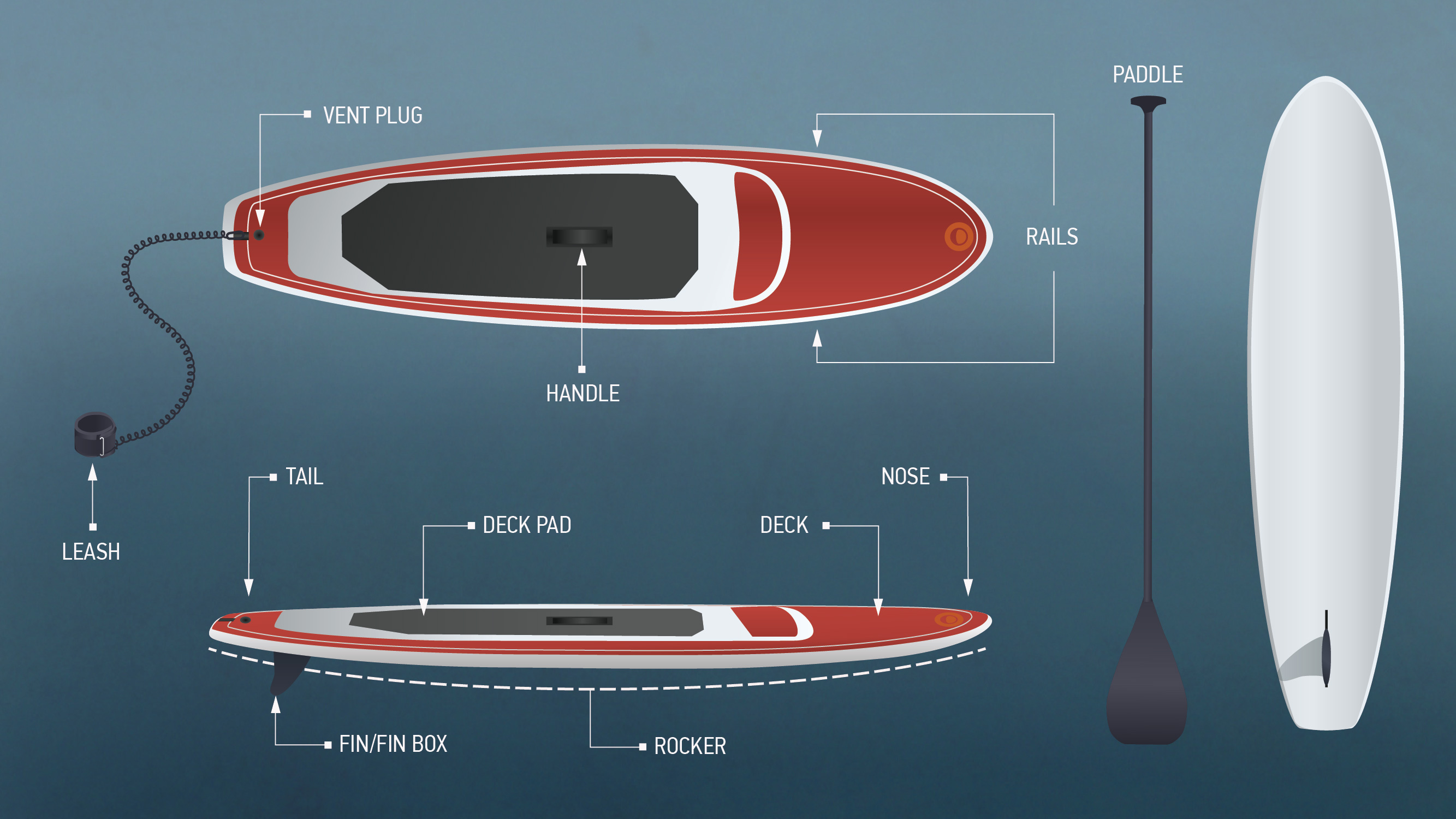PADDLERsmart! USA Knowledge Base
Module 01 - Paddling Basics:
STAND UP PADDLING TERMINOLOGY

- Life jacket:
- When Stand Up Paddling, you are required to carry a life jacket or PFD with you at all times. We highly recommend that you WEAR your life jacket or PFD while paddling on a SUP board. Besides, where else are you going to put it, right?
- Paddle:
- A paddle is a handheld device with a shaft and a blade. The paddle is used to propel the SUP board through the water and should be about 10-20 cm taller than the height of the paddler so that they can stand up tall and straight while paddling.
- Leash:
- A SUP leash is a strap that attaches the SUP board to the paddler and keeps the board from shooting off if the paddler falls off the board.
- Rocker:
- The rocker on a SUP board is the degree of upward curve from the nose to tail of the board. A small rocker (like on Flat Water SUP boards) will allow the board to glide more smoothly over longer distances. A significant rocker (like with Surf SUP boards) allows the boards to ‘carve’ and make sharp turns more easily on waves.
- Nose:
- The nose is the front end of a SUP board.
- Tail:
- The tail is the back end of a SUP board.
- Deck:
- The deck is the top part of a SUP board (where you stand when paddling). On some beginner boards, there will be a contoured area that indicates exactly where you should put your feet.
- Deck pad:
- This is the ‘grippy’ surface on the deck that provides traction for your feet.
- Handle:
- Sometimes called the ‘soap dish’, the handle is the area on the deck where you can grab the board when you need to carry it on shore or re-board it from deep water.
- Fin/Fin box:
- The fin or fin box is located on the bottom of the board. It’s used to keep the board in a straight line while the board moves forward through the water.
- Rails:
- These are the sides or edges of a SUP board.
- Vent Plug:
- Boards made of foam will contain gases, which will expand and contract with changes in the air temperature or after they’ve been in storage for a long time. Vent plugs are used to help balance the build-up of these gases.





